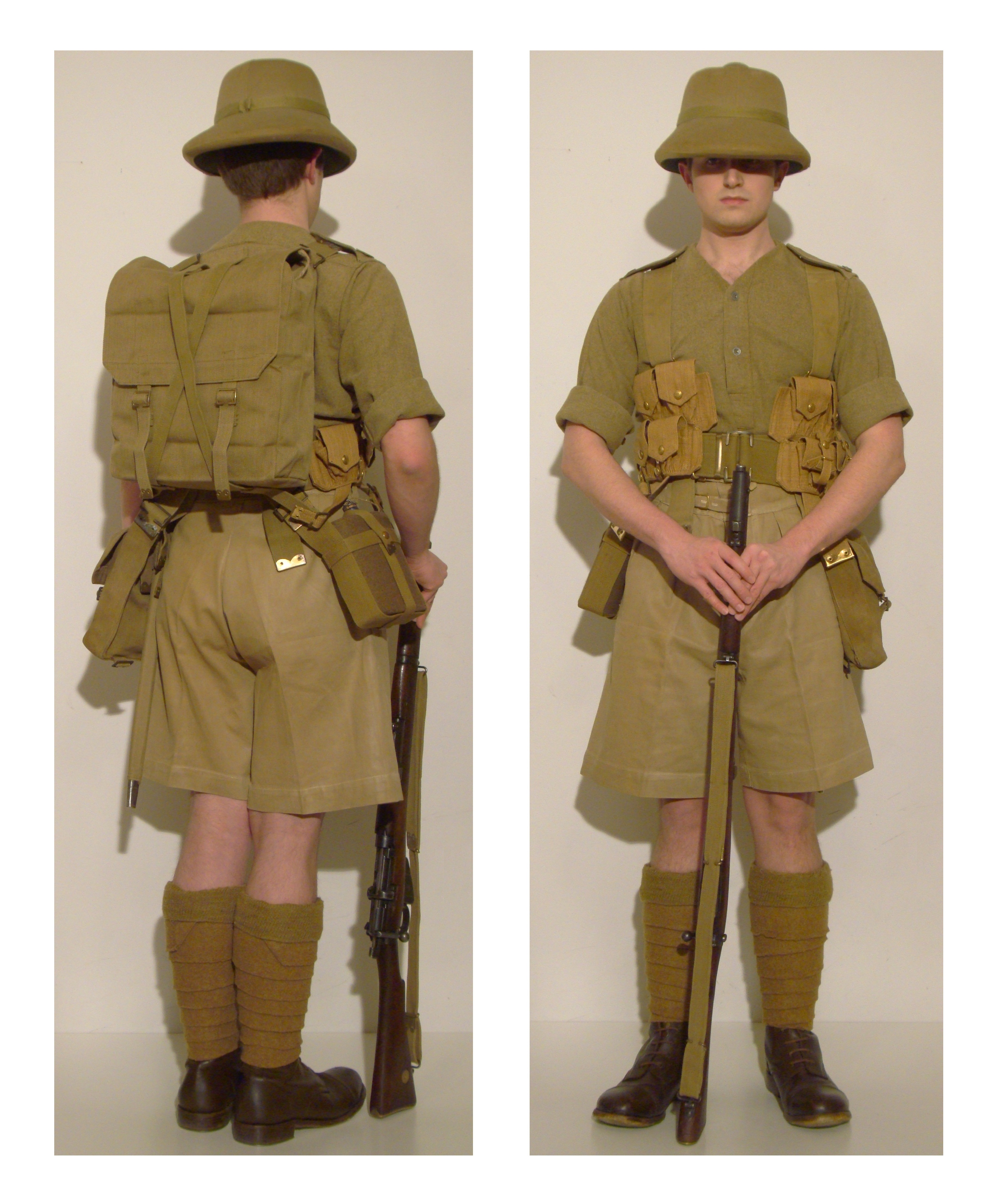 The Waziristan Campaign (1936-1939) was a series of operations by a combined British and Indian force intended to restore Imperial Prestige in the Waziristan region of the Northwest Frontier of British India. Early reverses of the British by tribal Lashkars caused widespread insurrection among Wazirs, Mahsuds, Bhittanis, and Afghans under the leadership of the mysterious Fakir of Ipi. At the height of the campaign, 60,000 imperial troops were garrisoned on the frontier in towns like Razmak, Bannu and Wana. Continue reading
The Waziristan Campaign (1936-1939) was a series of operations by a combined British and Indian force intended to restore Imperial Prestige in the Waziristan region of the Northwest Frontier of British India. Early reverses of the British by tribal Lashkars caused widespread insurrection among Wazirs, Mahsuds, Bhittanis, and Afghans under the leadership of the mysterious Fakir of Ipi. At the height of the campaign, 60,000 imperial troops were garrisoned on the frontier in towns like Razmak, Bannu and Wana. Continue reading
Author Archives: Michael S.
The British Commonwealth Soldier in the Kingdom of Iraq 1941 (Recreated)
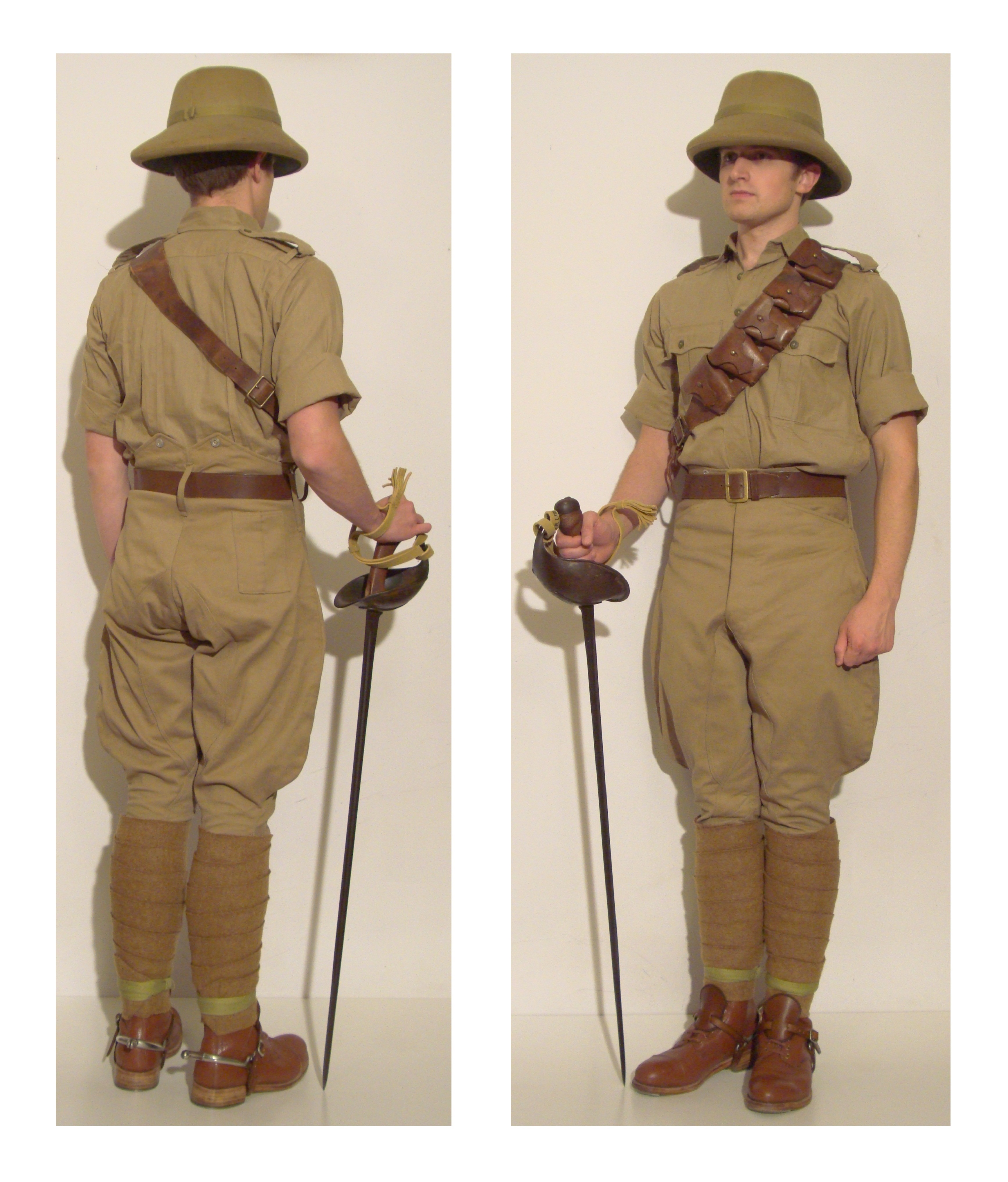 The formation of Rashid Ali’s ‘National Defence Government’ in Iraq and its strong ties to Germany and Italy seriously threatened the British position in the Middle East in April 1941. As tensions mounted, the Iraqi Army began a siege of the RAF airbase at Habbaniya. In response, the British created a force to relieve Habbaniya from existing units in the British Mandate of Palestine. First Cavalry Division was an element of the newly created ‘Habforce’ (as it became known). Originally arriving in the Middle East in January of 1940 as a garrison and occupation force, the First was the last mounted division in the British Army. Continue reading
The formation of Rashid Ali’s ‘National Defence Government’ in Iraq and its strong ties to Germany and Italy seriously threatened the British position in the Middle East in April 1941. As tensions mounted, the Iraqi Army began a siege of the RAF airbase at Habbaniya. In response, the British created a force to relieve Habbaniya from existing units in the British Mandate of Palestine. First Cavalry Division was an element of the newly created ‘Habforce’ (as it became known). Originally arriving in the Middle East in January of 1940 as a garrison and occupation force, the First was the last mounted division in the British Army. Continue reading
The British Commonwealth Soldier in Jamaica (Circa 1940) Recreated
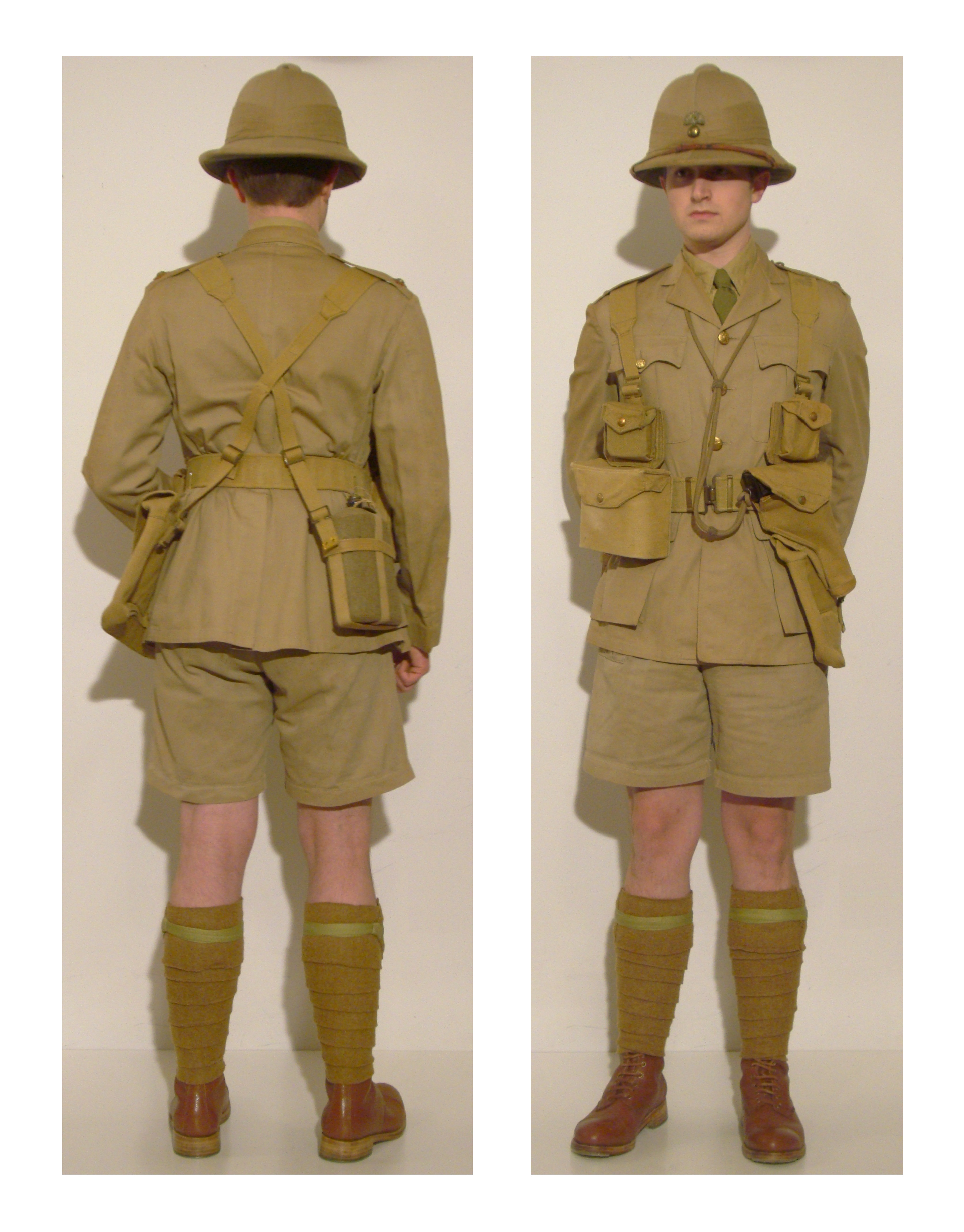 With the war in Europe going badly for the allies, it was deemed necessary to withdraw the British infantry battalion that usually garrisoned Jamaica and Bermuda to reinforce the heart of the Empire. The Dominion of Canada was asked to field a replacement battalion and agreed at once. ‘Y Force’, as it was known, arrived on May 27 and consisted of the Winnipeg Grenadiers, a machine-gun regiment. This force took up residence in the British base at Up Park Camp outside Kingston as well as the cantonment of Newcastle in the Blue Mountains. (Foster) Continue reading
With the war in Europe going badly for the allies, it was deemed necessary to withdraw the British infantry battalion that usually garrisoned Jamaica and Bermuda to reinforce the heart of the Empire. The Dominion of Canada was asked to field a replacement battalion and agreed at once. ‘Y Force’, as it was known, arrived on May 27 and consisted of the Winnipeg Grenadiers, a machine-gun regiment. This force took up residence in the British base at Up Park Camp outside Kingston as well as the cantonment of Newcastle in the Blue Mountains. (Foster) Continue reading
The British Soldier in Singapore (Circa 1941) Recreated
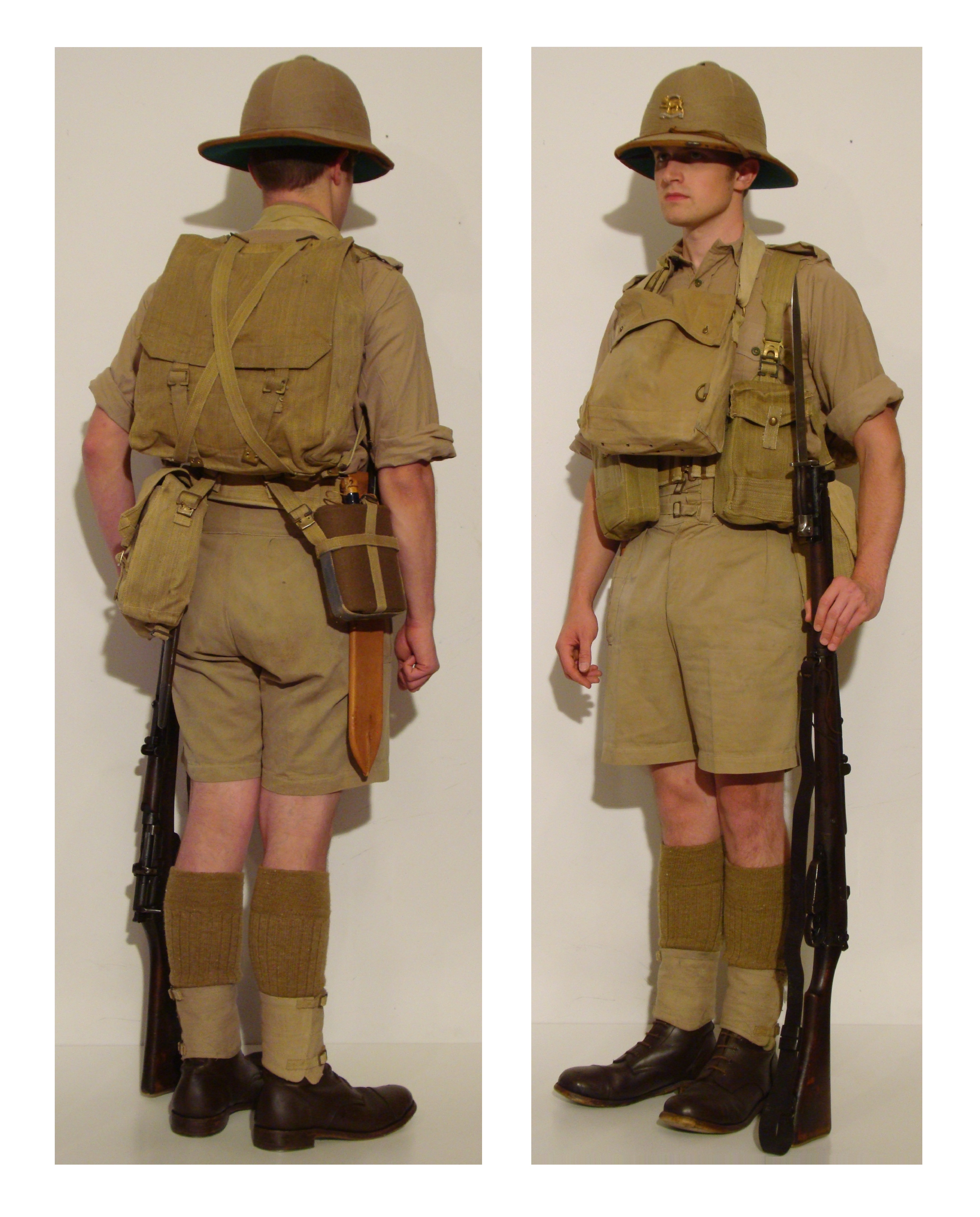 In 1919, Singapore was chosen as the most strategic location to construct a naval base to counter any move southward to India or Australia by the Empire of Japan. Throughout the 1920s and 30s, Singapore’s defenses were increased and the fortress became known as the ‘Gibraltar of the East’. By 1941 however, the Singapore garrison had been stripped bare to support the conflict raging in the West. (Singapore) Continue reading
In 1919, Singapore was chosen as the most strategic location to construct a naval base to counter any move southward to India or Australia by the Empire of Japan. Throughout the 1920s and 30s, Singapore’s defenses were increased and the fortress became known as the ‘Gibraltar of the East’. By 1941 however, the Singapore garrison had been stripped bare to support the conflict raging in the West. (Singapore) Continue reading
The South African Soldier (Circa 1940) Recreated
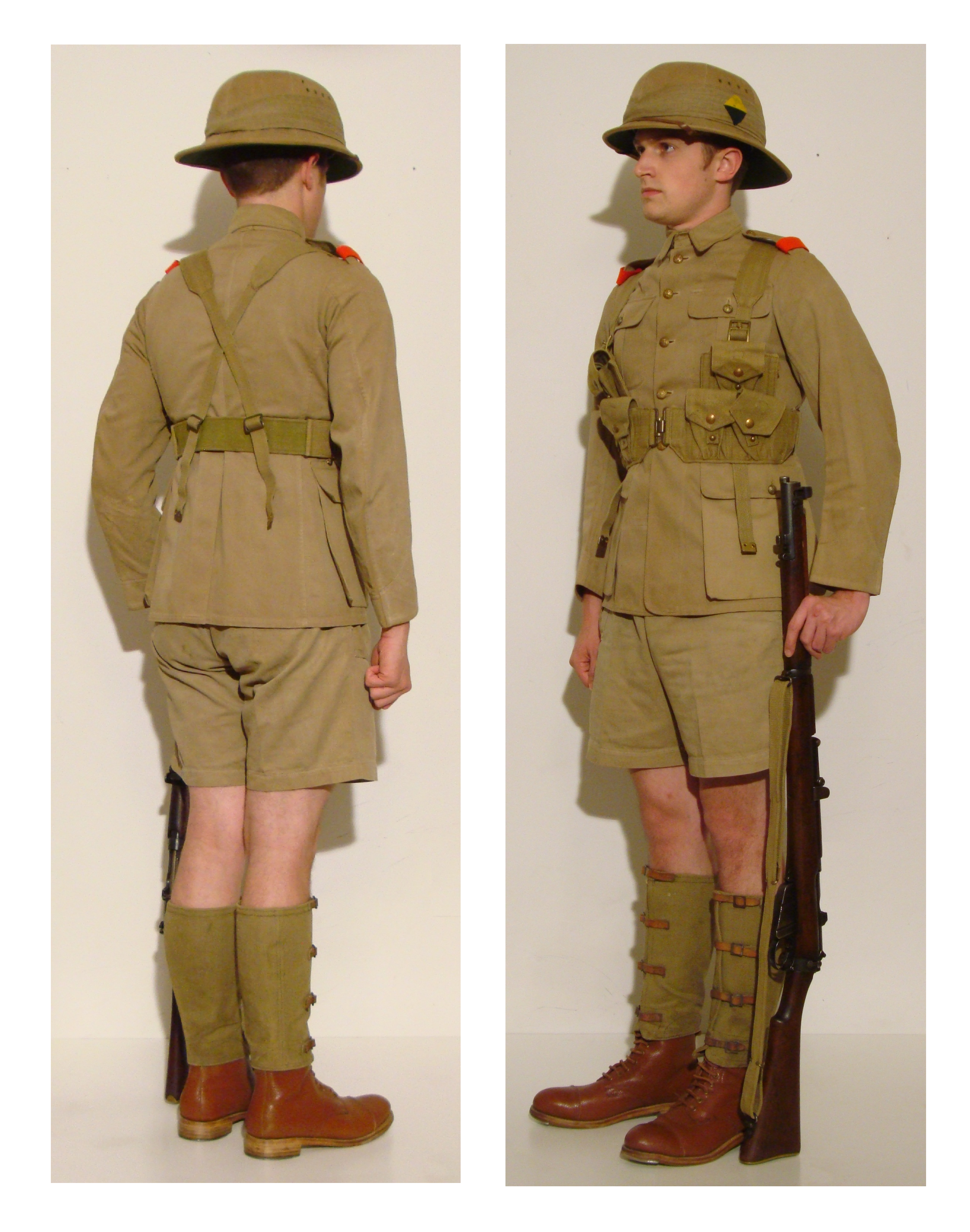 The Union of South Africa’s entry into the Second World War in 1939 caused much controversy among its divided population, and in particular among Afrikaaners. This was in large part due to General Smuts’ defeat of Prime Minister Hertzog’s call for South African neutrality in parliament.
The Union of South Africa’s entry into the Second World War in 1939 caused much controversy among its divided population, and in particular among Afrikaaners. This was in large part due to General Smuts’ defeat of Prime Minister Hertzog’s call for South African neutrality in parliament.
Given the tense climate, Smuts did not introduce conscription to fill the ranks of South Africa’s military, the Union Defence Force, but instead relied on volunteers. The South African Defence Act also prevented this force from serving outside the borders of the Union. To circumvent this limitation, UDF volunteers took an oath to serve anywhere in Africa which entitled them to wear orange/red strips known as ‘red tabs.’ 1,2
